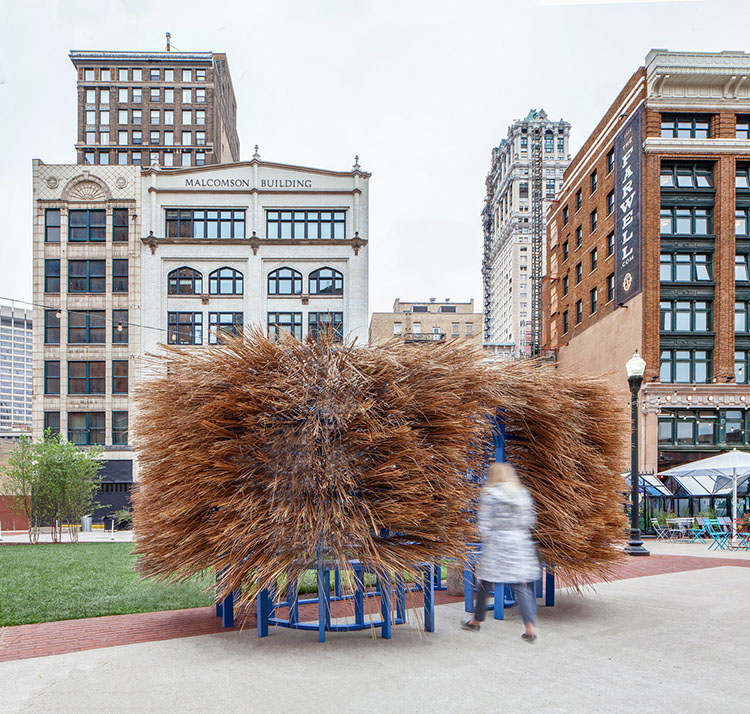creates participatory interventions that blur the line between the graphic and architectural, the speculative and built, the gauche and spectacular. We challenge notions of omniscient architectural mastery and are instead preoccupied with architecture’s range of immediate emotive capacities. Current interests include: primitive huts, recycling and assemblage, iconography, aggregated composites, movement, nooks, and fuzziness. Nice One Projects (R. Kataki, A. Song, E. Wang) are based in Cambridge, Massachusetts.
Chaffy, 2018

A sukkah is an inherently paradoxical construction. A shelter designed to be impermanent and exposed to the elements, the sukkah is a reminder of the precarious and fragile life of our bodies within the world. In response to this charged premise, we proposes a temporary structure that embraces the idea of openness by dissolving the idea of the wall itself. Composed of thousands of suspended thatch bundles, the continuous wall is at once exposed and protective, solid and transparent, fixed and always moving.
With its hairy, flaxen shell, the sukkah hides an intimate space of rest, one where celebrants may peek out while being obscured by sheaves of thatch. The interior is meant to provide a moment of multisensory repose. The sound and smell of the rippling thatch walls and the interplay of light and shadow underneath the bamboo ceiling allow visitors to reset from the auditory, olfactory, and visual stimuli of the outside world.


Our approach to construction reflects the notion that a sukkah must be built solely for the purpose of providing shelter during Sukkot. Its form cannot arise accidentally, be happened upon, or be repurposed from an existing feature or construction. Our sukkah is comprised of a lightweight wooden frame that suspends each thatch bundle between two layers of natural fiber mesh. The construction happens easily and quickly, with the majority of work being done by hand. We celebrate the process of construction: our sukkah deliberately becomes itself as each bundle is placed.

INDEX
About
Nice Huts, 2017
Putt & Peal, 2017
Mouthpiece, 2017
Chaffy, 2018
Gerikipous Beach Theater, 2018
Disruptive Design Chicago, 2019